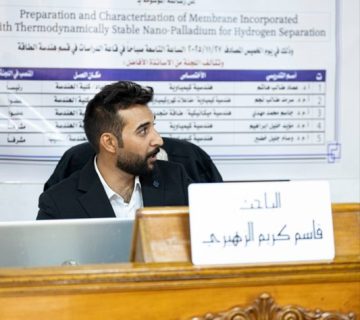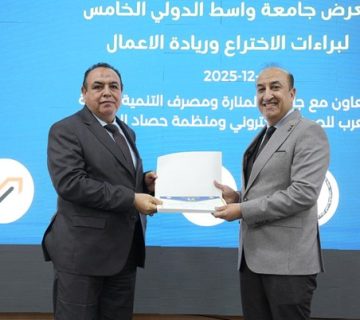The Mechanical Engineering Department at the College of Engineering, University of Baghdad, held a Ph.D thesis examination titled:
“Analysis, Design, and Manufacturing of a Semi-active Knee Prosthesis “.
By the student AHMED KHALEEL ABDULAMEER and supervised – Prof. Dr. Mohsin A. Al-Shammari on Wednesday, 24/4/2024, in Dr. Ihsan Yahya Hussein Hall. The examination committee consisted of
1- Prof. Dr. Majid H. Faidh-Allah (Chairman).
2- Prof. Dr. Kadhim K. Resan (Member).
3- Asst. Prof. Dr.Waleed K. khairi (Member).
4- Asst. Prof. Dr. Karim H. Ali (Member).
5- Asst. Prof. Dr. Thaier J. Ntayeesh (Member).
After conducting the public discussion and listening to the student’s defense, the thesis was accepted. The thesis was summarized as follows: design and manufacture a magnetorheological damper-based prosthetic knee that features a lightweight, and affordable cost capable of mimicking the human knee joint as closely as possible so that the amputee feels comfortable. The work is divided into four stages: First, the mechanical design phase involves creating a microprocessor-controlled prosthetic knee using SolidWorks, according to the design criteria. Second, structural analysis was conducted using ANSYS Workbench to assess its durability and stability. The third stage involved manufacturing the knee prosthesis utilizing a CNC machine. Lastly, an electronic control system for a magnetorheological damper-based prosthetic knee was designed and validated, with performance evaluation conducted by an above-knee amputee.
The results of the structural analysis showed that the prototype of a magnetorheological damper-based prosthetic knee is safe from mechanical failure. It is found that the maximum stresses occur in the lower holes of the frame recording (23.151) MPa, while in the case of the hinge joint, the maximum stresses in the upper segment of the holes that link the hinge joint with the magnetorheological damper registering a maximum stress level of (16.309) MPa.
The components of the MR damper-based prosthetic knee were selected carefully to produce an optimum model with 246 mm length and 1.55 kg mass, as well as its affordable cost. Despite the simplicity of the control system, it has proven its effectiveness when it comes to walking on level terrain. The performance of the control system for microprocessor-controlled knee prosthesis was experimentally validated by the case study subject by walking on the treadmill (the Zebris device) at different speeds to analyze the gait cycle. It was found that the patient’s cycle time, cadence, and stride length at speeds of 0.833 m/s were approximately (1.3) sec, (92) steps/min, and (1.06) m respectively. These findings closely align with their counterparts observed in healthy individuals of the same age and speed during the gait cycle.








